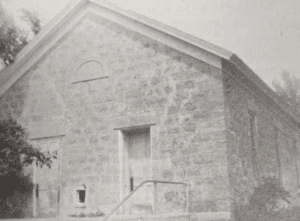Eating his nightly pie – this time, chocolate – Clay Center resident Jimmie Nichols settled in to talk about his scanner feed. In May of 2017, radio hobbyist Nichols decoded local police channels that are now available to the public.
Police scanners are nothing new, of course – with analog radios, listening to chatter was a family staple, Nichols said.
“Back in the old days when it was analog, everybody was listening,” he said. “You could buy a scanner for $35- $40 at a garage sale.”
But once radios moved to digital, it got more difficult to hear. Or rather, more expensive. He estimates a cheap digital scanner to start north of $300. Nichols, who works as a Mechanic Shop Foreman for the County, has always been interested in radios. But he has another hobby: Linux software, an open-source operating system.
With a little research, he found police feeds could be decoded with the later, another software, Raspberry Pi, and a tuner. Add an antenna, and the program decodes what it hears back into a voice, he said. Then, it’s uploaded to a service out of California that allows listeners to tune in locally.
Back in 2017 he searched the area, but found no one was following the Clay County feed. (Today, just eight Kansas counties do not have a feed.)
That’s when Nichols decided to set up his own.
“There’s some pros and cons on it.” He said. “Some people say you shouldn’t be listening but overall I think it’s a positive because if someone listens they can actually help the police. So it’s actually a benefit I think.”
Though technically, anyone can listen with their own scanner, this feed allows locals to listen via computer or app, only needing an Internet connection.
Quick to point out that the scanner gig is a volunteer operation – not associated with his county job – he also said he likes it that way.
“I like mechanic-ing and I like being a hand radio operator, so that’s one of the good things about my jobs,” he said. “It’s pretty much a dream job.”
Nichols has delayed the feed during certain events, such as domestic events or an accident that might have been graphic. Though he’s let local law enforcement know he has this capability, they’ve never asked for the delay; he’s done it from his own judgment.
“I don’t want to be the reason a police officer got hurt, so I try to be on the positive side, not the negative,” he said.

Radio Love
Nichols said his interest with radios dates back to high school, when he and friends would drive around with CB radios in their vehicles.
“When I was growing up, that was the time of Smokey and the Bandit, we used to play skunk tag,” he said, describing a game where the radio signals were used to locate a hidden parked car.
Years later he got involved with General Mobile Radio Service (GMRS), which is a licensed radio service that uses channels around 462 MHz and 467 MHz. At just $35 for a family’s call sign – good for a decade – he said it’s an affordable hobby for all ages. But he also understands why it hasn’t quite caught on.
“I was fascinated with it. The kids aren’t today because we have all this magical stuff; they just don’t have the bug for it like I did,” he said. “It’s fun but the thing is everybody’s got a cell phone.” He was quick to point out the physical limitations of radios, while cell phones reach much further. Until they go down, he said.
Nichols and his wife, Jan, also have amateur extra radio licenses, which required studying and taking three tests. Amateur extra is the third level of being an amateur operator, also known as ham radio. They are also Volunteer Examiners, or VEs – two of eight in town. And they are are a part of the Clay Center Amateur Radio Club.
Together they radio out or discuss different equipment or what could be done to enhance their setup. His call sign is ke0eyh, Jan’s is ke0feq, and their GMRS call sign is wrjr790.
They also have a live feed for their amateur radio channel, one of just nine counties in the state to have a similar feed.
“I see it as sort of the prepper part of planning for disaster stuff,” he said.
Software Setup
Nichols studies software and researches new setups, just like he does with radio. All for fun. It’s how he learned to set up the scanner feed in the first place.
“With the computer stuff, I’m just an enthusiast,” he said. Noting that he found his scanner feed computers in the local landfill. Adding necessary equipment and he turned someone’s trash into a working data center.
“The software has come a long way in the last 10 years, it’s pretty much plug and play,” he said. “There’s a little bit of a learning curve but it works pretty well.”
He also gave advice for anyone wanting to avoid computer viruses: never operate as the administrator unless you’re installing something, use a guest account, he said, and you can avoid the viruses.
Rounding out the scanner feed includes a local Facebook page, where listeners can discuss or check in with one another.
“It’s a nice meeting place for people to share information,” he said. Adding that the biggest complaint he gets is people mentioning names. To remedy this, he asks users to use general information rather than specifics. For instance, referencing a block rather than a specific address.
“We’ve had overall pretty positive response,” he said of the page. “For the most part, there’s no one unruly. We don’t want anyone bashing the police or bashing anybody and for the most part people have been following that.”













